Do you like to climb mountains?
I love, love, love the mountains. In an earlier pre-being-a-mum incarnation I used to do proper climbing with ropes and harnesses and all that jazz. Mr B, however, is not a mountain man. He's a city boy, hates heights and doesn't understand why anyone in their right mind would want to scale a mountain just to have to come down again. He doesn't get it.
Ten year-old Emi, on the other hand, does get it. He loves the challenge of a good climb. At a recent family lunch, in the shadow of Montgrí, I casually suggested to Mr B and the in-laws that we should climb the mountain to work off some of the calories we'd just consumed. They all fell about laughing. What a crazy idea, but Emi was totally up for it. Like mother, like son.
And, here's the thing, just look what's up at the top of Montgrí. Now that's what I call a castle ...
 |
| Torroella de Montgrí Castle |
The thing is that it's rather a long way up, and there isn't a road that lets you drive to anywhere near the top. Here's how it looked the day before when we were off exploring a rather nice beach:
 |
| Toroella de Montgrí Castle |
All thing's told it's a good climb, but we held onto the thought that countless pairs of feet over as many generations had made it up before us, many of whom were unshod and carrying heavy loads to build the citadel up there in the sky.
Work on the Castle of Montgrí started in 1294, on the orders of James II of Aragon, who wanted a fortress built high on the mountain so that an eye could be kept on Ponç Hug IV, the Count of Empúries. James was a busy chap: he was, amongst other things, King of Aragon and Valencia and Count of Barcelona. He ordered Bernat de Llabià, the royal governor of the neighbouring town, Toroella de Montgrí to oversee the work for him.
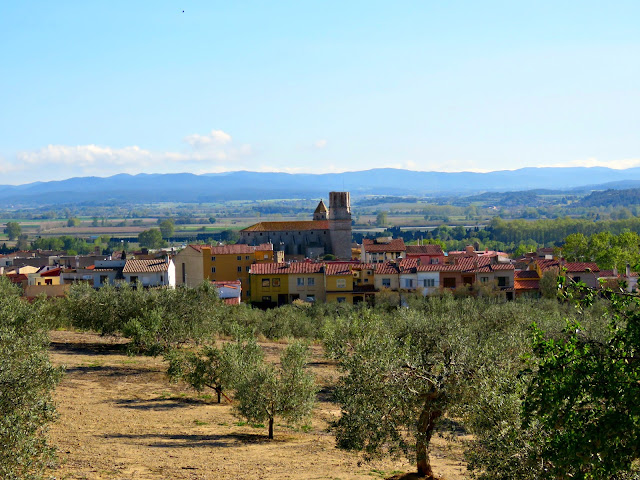 |
| Toroella de Montgrí |
The path out of town started off easily enough, winding through olive groves, making its way gently up the mountain. It felt timeless, biblical even. Not much appears to have changed since Bernat de Llabià's work teams plodded up this way with their supplies to build the castle. Looking up, though, it felt like we had a long journey ahead of us. A sign beside the main road had told us rather optimistically that it would take 41 minutes to get to the top, but I had a hunch that we'd take rather longer than that. We tend to amble along, talking about the what-if's and what it would have been like back in the day. We pause lots to take photos, admire the view, smell the flowers, let the WonderDog sniff the flowers - and all the other things WonderDogs like to sniff.
 |
| Toroella de Montgrí Castle |
We trudged on. A couple of mountain runners sped past us. The castle came into view, and then disappeared from view as the path wove its way around the shoulder of the mountain. When we got to the top we learnt that it was constructed from rocks that they'd quarried up there on the summit, so at least the poor serfs, who did the donkey-work, didn't have to drag the masonry up the slopes.
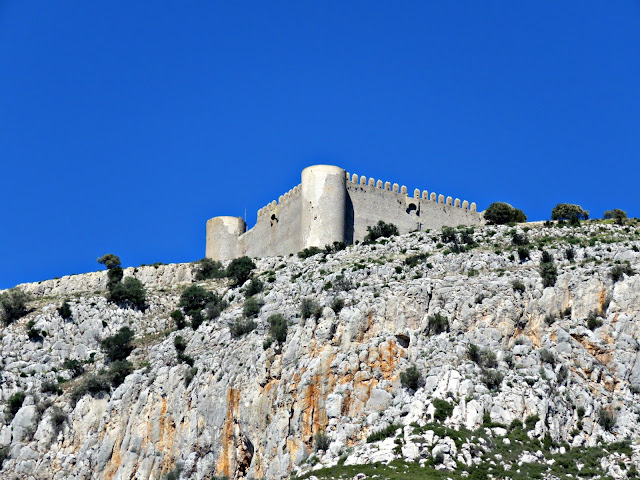 |
| Toroella de Montgrí Castle |
The views looking back down across the plains to the sea kept us inspired. They were stunning and just kept getting better and better as we ascended.
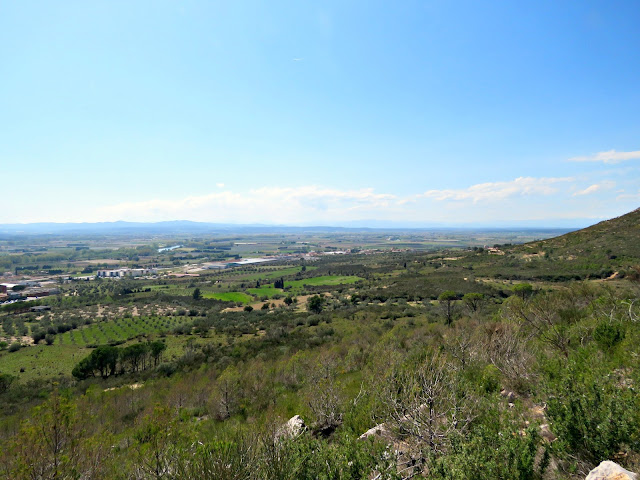 |
| Views from Montgrí |
But the higher we went, the harder it became to find the path. There are little red and white flags painted sporadically onto rocks that are supposed to show you the way. Occasionally they put red and white X-signs where you were really not supposed to go - like over the edge of precipices and that sort of thing. Nevertheless we genuinely struggled to find the official path in some places. Luckily there were a few people up ahead, and, hoping that they'd got it figured out, we followed in their general direction.
 |
| Shelters on the mountain at Toroella de Montgrí |
There are a number of small stone-built shelters, where you could rest if you were caught in a storm. They look like they've been there since forever.
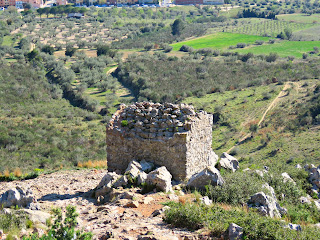 |
| Shelters on the mountain at Toroella de Montgrí |
They appear to have been made entirely from stone, using Roman arches to support a roof that is also made from stones gathered off the mountainside.
 |
| Emi's Sound of Music/ Rodgers & Hammerstein moment |
To enter into the full spirit of the adventure Emi insisted on bringing a broadsword that he'd purchased the day before in one of the tourist shops in Pals. It looks like a serious piece of work, but is in fact made from a high quality plastic and didn't weigh too much as a consequence. Nevertheless we must have looked curious: a child bearing an oversized sword, his mum brandishing her camera like a holy talisman and the diminutive WonderDog trotting along with his usual
I-own-the-mountain swagger.
 |
| Toroella de Montgrí Castle |
When you finally make it up there to the top you can see the shelves of rock from which they quarried the stones to build the castle. Because the structure was never finished architectural historians have been able to see a lot more of the building process than might otherwise have been the case if everything had been put together, covered up and completed.
 |
| Rock shelves from which building rocks were quarried |
It really is a piece of work, built in the Crusader style, which was then popular around Europe.
James II faced a certain amount of opposition when he signed the Treaty of Anagni with the French and the Papacy in 1295 ceding the Kingdom of Sicily to the French and putting an end to the War of the Vespers. The Sicilians really weren't having any of this, and they took James's younger brother Frederick as their king in his place. Frederick, greatly concerned that James might go to war with him over the issue, sent an emissary to Catalonia to try and stir the barons up against James and muster support for Frederick as King of Sicily.
 |
| Toroella de Montgrí Castle |
The emissary, a chap called Mountainer Pérez de Sosa, came bearing an Occitan poem, which seemed to have Ponç Hug in mind as its recipient, and sought to rally the Catalans to Frederick's cause. Ponç Hug penned another in reply, praising Frederick's good points but spelling out very clearly that he could not, and would not, abandon his sovereign.
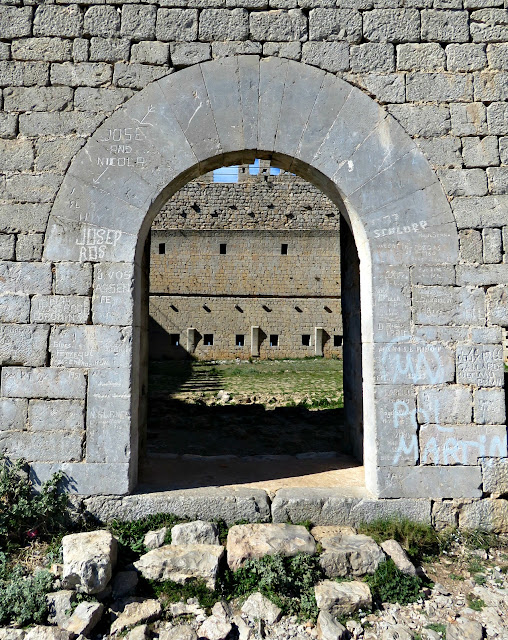 |
| The main door |
However, as the thick walls of Montgrí testify, James wasn't taking anything for granted. He'd long been suspicious of our friend Ponç Hug, who was just a little bit too powerful for James's liking. Ponç Hug had married the daughter of the Count of Cabrera back in 1282, thus extending his influence beyond the borders of Empúries in a great dynastic alliance. And, although he and his men had fought for James in the Sicilian Wars, Ponç Hug had provoked a bit of an incident when he'd taken hostage 65 subjects of the Sultan of Granada, who was at the time an important ally of the king's.
 |
| Inside Toroella de Montgrí Castle |
James was more than slightly upset by this development. Had Ponç Hug been trying to sabotage his sovereign's position? He was deeply distrustful.
 |
| Inside Toroella de Montgrí Castle |
Then, the final straw came when Ponç Hug diverted the flow of the River Ter across the plain below Montgrí before it reached the Royal city of Torroella de Montgrí. This sabotaged the supply route that carried provisions to the Royal Court.
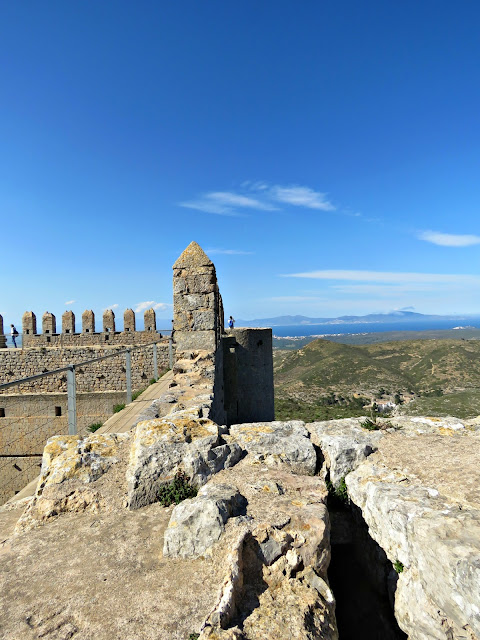 |
| The battlements of Toroella de Montgrí Castle |
War broke out between the Count and the King, in which the Count was greatly out-manned and out-gunned by the King. Broken and close to ruin Ponç Hug was forced to submit in 1306. By the time he died, without a legitimate heir in 1313, the threat from Empúries had been liquidated and the reason for building the castle had gone. As a result the King's grand plans for finishing the fortress and adding ancillary buildings never came to fruition.
Today the panoramic views from the battlements are sublime. Way back in the thirteenth century any royal defenders up here would have seen an enemy army marching towards them a couple of days before they arrived.
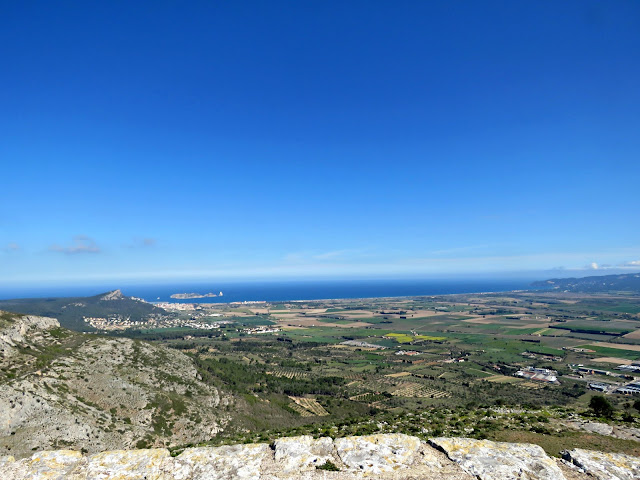 |
| View from the battlements of the Castle of Montgrí towards the Islands of the Medes |
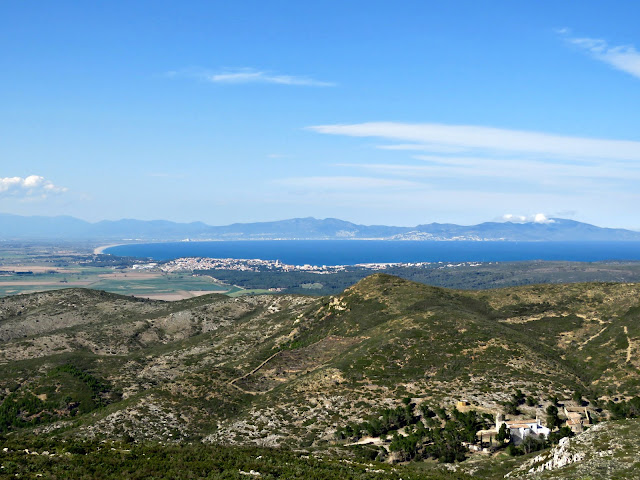 |
| View from the battlements of the Castle of Montgrí towards the Bay of the Roses |
|
 |
| View from the battlements of the Castle of Montgrí looking back down the mountain |
|
Sheltered on the landward side of the mountain is the Hermitage of Saint Catherine. It dates from around 1392, when three hermits, Bartholemew, Peter and Tarascon, who were disillusioned by divisions within the church, withdrew from the world to live a life of prayer and contemplation.
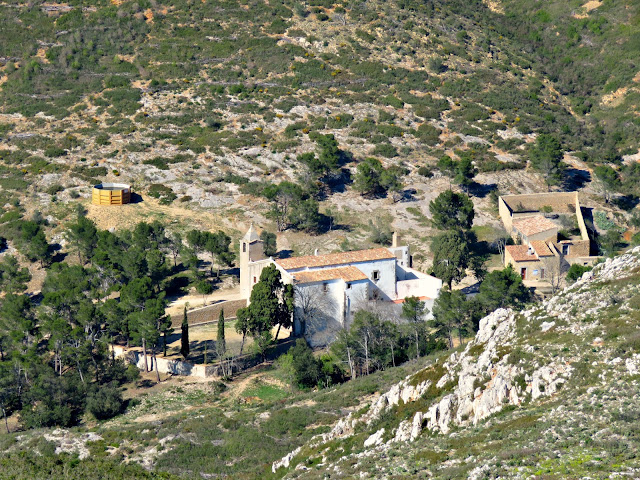 |
| St. Catherine's Hermitage, Toroella de Montgrí |
In short it's well worth the climb. I'd recommend that you wear strong shoes and bring a bottle of water. There are no shops or vending machines at the top. It also gets quite windy up there, so it would be a good idea to have a fleece or something to layer on if you feel cold.
All the best for now,
Bonny x





















No comments:
Post a Comment